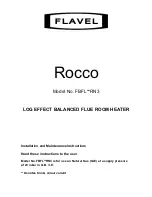
11
F.
Contact the manufacturer, supplier, or competent consulting
agency if you have any questions about the application or
installation of PVC, PVC cellular core, ABS or CPVC pipe.
G. Take the time and effort to do a professional job. Shortcuts
will only cause you problems and delays in start-up. The
majority of failures in these systems are the result of
shortcuts and/or improper joining techniques.
2. SELECTION OF MATERIALS
PRIMER
It is recommended that Tetrahydrofuran (THF) be used to prepare
the surfaces of pipe and fittings for solvent welding. Do not use
water, rags, gasoline or any other substitutes for cleaning PVC
cellular core, ABS or CPVC surfaces. A chemical cleaner such as
MEK may be used.
CEMENT
The cement should be a bodied cement of approximately 500 to
1600 centipoise viscosity containing 10-20% (by weight) virgin PVC
material solvated with tetrahydrofuran (THF). Small quantities of
dimethyl formamide (DMF) may be included to act as a retarding
agent to extend curing time. Select the proper cement; Schedule
40 cement should be used for Schedule 40 pipe. Never use
all-purpose cements, commercial glues and adhesives or
ABS cement to join PVC or CPVC pipe and fittings.
SAFETY PRECAUTION: PRIMERS AND CEMENTS ARE
EXTREMELY FLAMMABLE AND MUST NOT BE STORED OR
USED NEAR HEAT OR OPEN FLAME. ALSO, USE ONLY IN A
WELL-VENTILATED AREA.
CONTROLS AND SWITCHES
The BTH-300 & 400 are equipped with four pressure switches.
These switches are essential to the safe and proper operation of
the unit. All switches are wired in series. The controller is set up to
shut the unit down whenever there is a failure of any of the switches.
It is important to understand the purpose of each switch.
BLOWER PROVER SWITCH
(SEE FIGURE 13)
The Blower Prover Switch is provided on the heater to verify that
the fan is operating. It is a positive pressure switch whose electrical
contacts are normally open. When the fan increases the pressure
in the burner, the pressure switch will allow the electrical contacts
to close. The pressure switch is connected to the burner tap by a
piece of tygon tubing. This tubing must be connected in order for
the switch to change the electrical contacts. The controller requires
that the electrical contacts on this air flow switch be open before it
will allow the blower to come on.
BLOCKED OUTLET PROVER SWITCH
(SEE FIGURE 13)
The Blocked Outlet Prover Switch is set up to shut the unit off
when a build-up of positive pressure in the exhaust vent pipe occurs.
This switch is a positive pressure switch that requires an increase
in pressure to change the electrical contacts from normally closed
to open. When this switch prevents the unit from igniting, most
likely the exhaust is blocked by some means. Check to see if the
condensate is allowed to flow freely from the exhaust elbow and
for obstructions in the exhaust venting and exhaust vent terminal.
BLOCKED INLET PROVER SWITCH
(SEE FIGURE 13)
The Blocked Inlet Prover Switch is set up to shut the unit off when
a build-up of negative pressure in the intake vent pipe occurs. This
switch is a negative pressure switch that requires an increase in
negative pressure to change the electrical contacts from normally
closed to open. The switch is connected to the pressure tap on the
flange connected to the inlet of the blower. When this switch prevents
the unit from igniting, most likely the intake is blocked by some
means. Check to see if there is no more than eighty (80) equivalent
feet (24.8m) of four inch PVC vent pipe on the intake. Also verify
that the intake and intake vent terminal is free of obstructions that
may prevent air from entering the unit.
LOW GAS PRESSURE SWITCH
(SEE FIGURE 13)
The Low Gas Switch (LGS) is a single-pole, normally open pressure
switch that will close its contacts when a rising pressure of 5.0 in.
W.C. (1.25Kpa) is encountered. The contacts will open when the
pressure falls below the fixed set point of 5.0 in. W.C. (1.25Kpa)
The LGS monitors the gas supply pressure to the heater. If the gas
supply falls below 5.0 in. W.C. (1.25Kpa), the main burner is
extinguished (if heater is running) or the heater will not start up.
FIGURE 13
ON/OFF SWITCH
The ON/OFF Switch is a single-pole, single-throw rocker switch.
This switch provides 120V from the line source to the heater.
CAUTION
THE WATER HEATER IS POLARITY SENSITIVE. BEFORE
APPLYING ELECTRICITY TO THIS HEATER BE CERTAIN THAT
SUPPLY NEUTRAL WIRE TO GROUND CHECK INDICATES
ZERO VOLTAGE.
HOT SURFACE IGNITER
The Hot Surface Igniter is a device that ignites the main burner by
high temperature (>1800°F or >982°C). When 120VAC is applied
to the igniter, sufficient heat is generated to ignite the main burner.
Although improvements have been made to strengthen the igniter,
it is fragile and care must be taken when handling the igniter to
prevent breakage.
NOTE: LOW GAS IS
LOCATED ON INLET
SIDE OF GAS VALVE.












































